浮遊性有孔虫とは
What are Planktic Foraminifers?
浮遊性有孔虫とは、海洋の表層に生息する単細胞の原生動物プランクトンです。サイズは約0.1~1ミリ程度です。世界で約50種類が知られています。
Planktic foraminifers are oceanic free-floating single celled protozoa. There are approximately 40 species are exist in the world ocean and their length are ca. 0.1 ~ 1.0 mm.
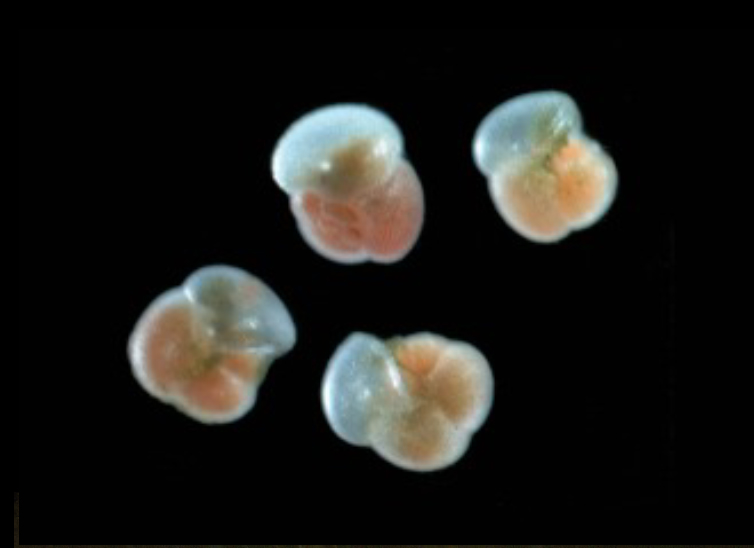
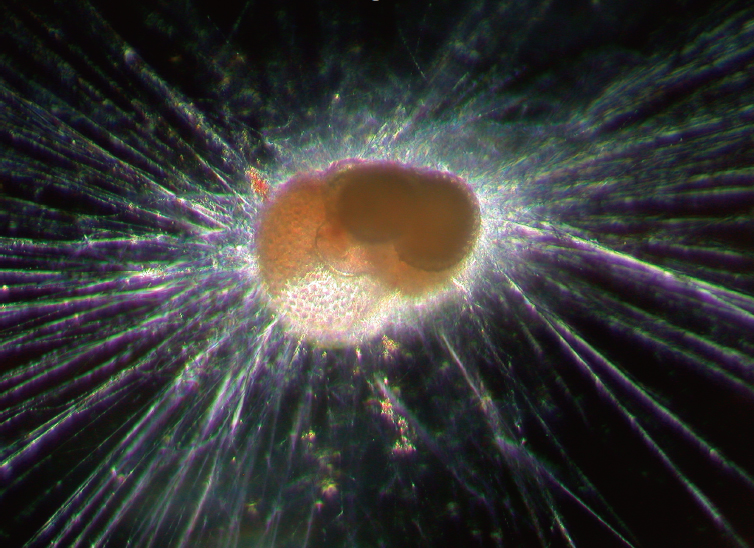
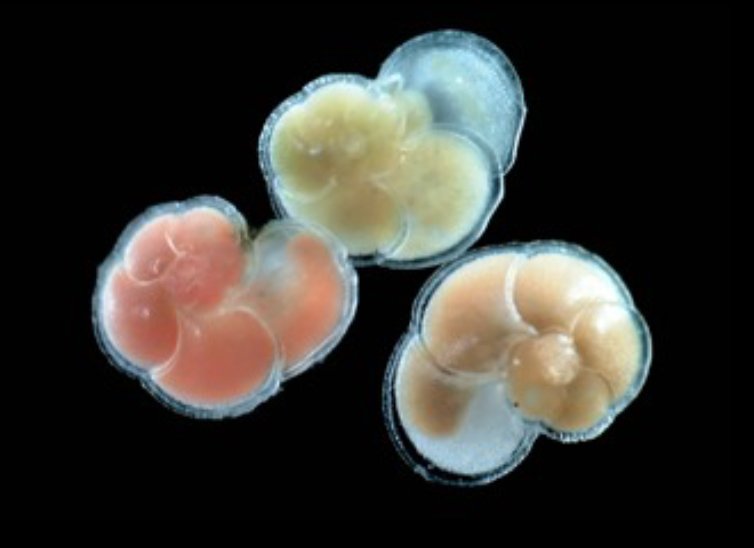
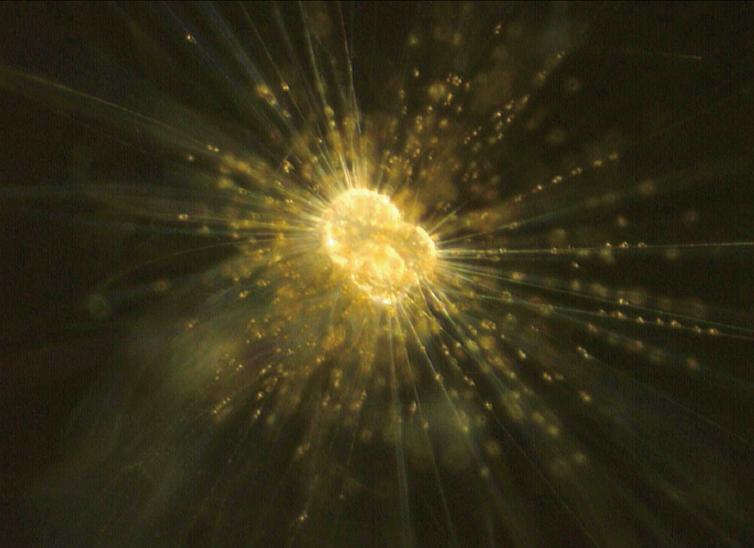
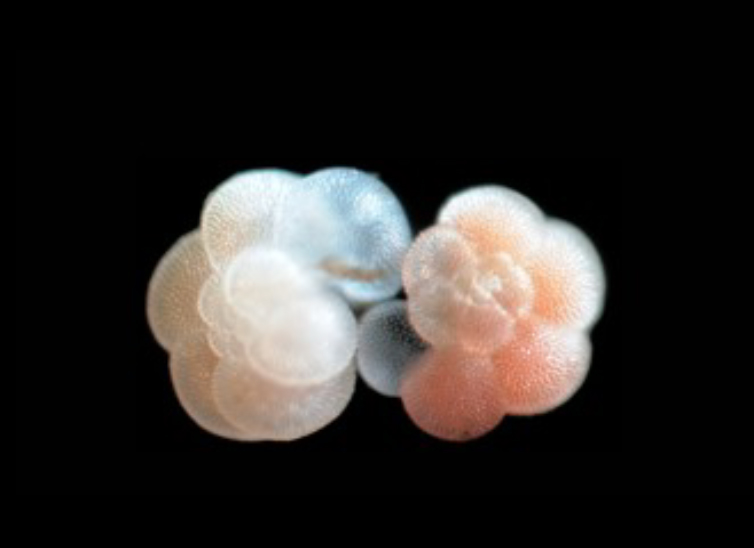
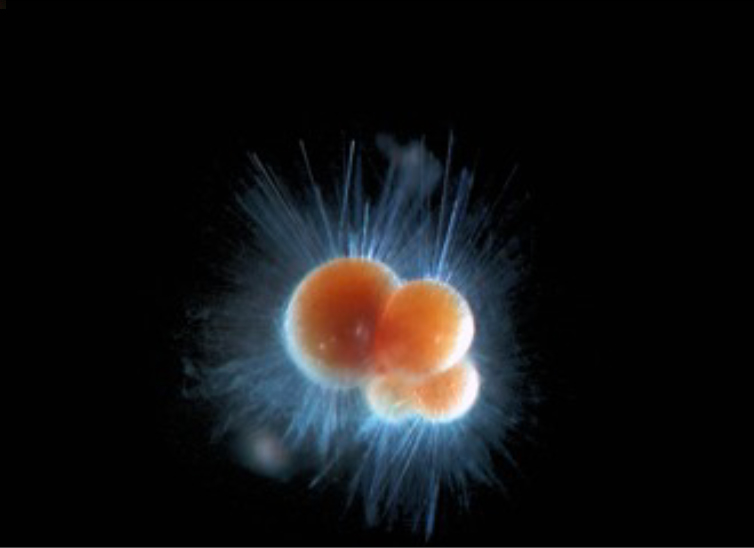
Living planktic foraminifers images
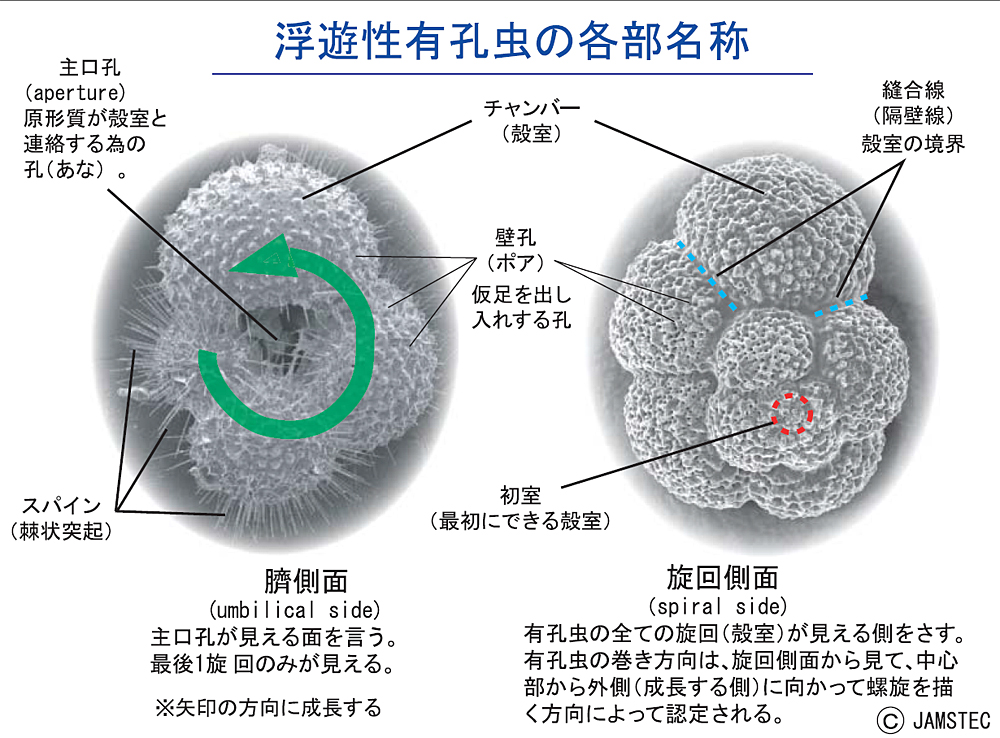
Part Names of planktonic foraminifera
生態 Ecology
浮遊性有孔虫はチェンバーとよばれる部屋をひとつひとつ作って成長してゆきます。海洋の表層に生息する種類は、成長するにつれてスパインとよばれる棘を作ります。
Planktic foraminifers create spherical calcareous shells (chambers) with their growing. Furthermore, some kind of planktic foraminifers make spines on surface of the shells for floating.
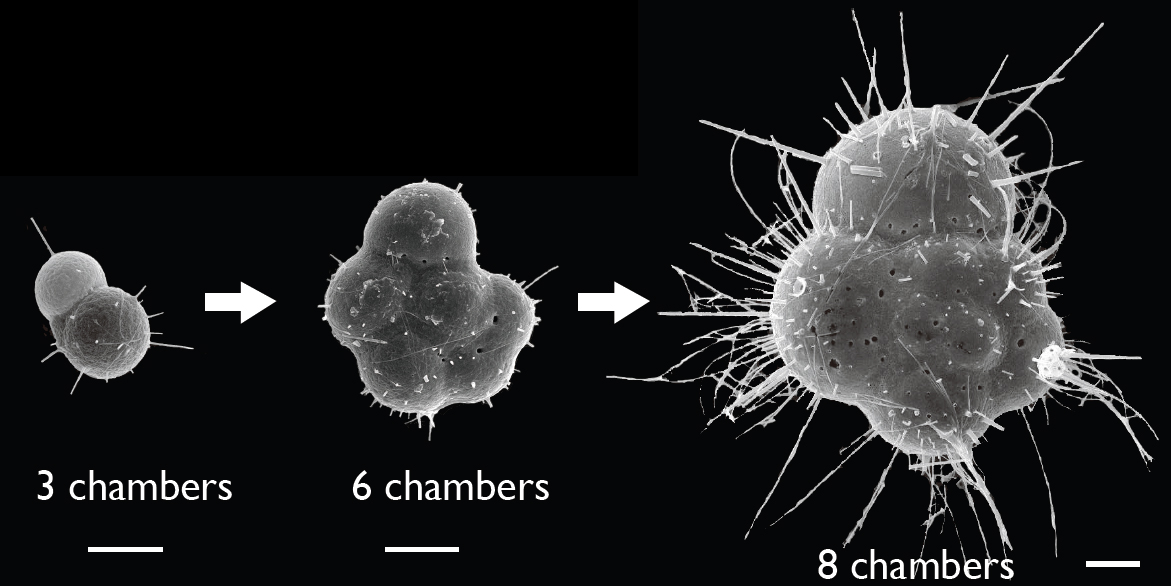
Growing processes of Globigerina quinqueloba. Scales = 10 μm
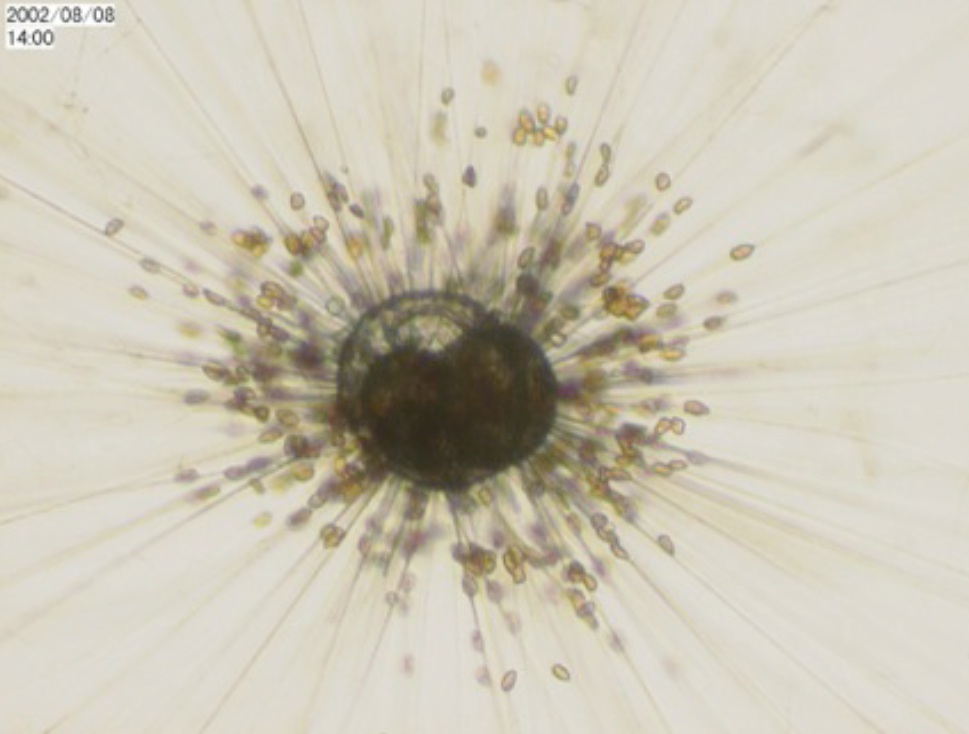
いくつかの浮遊性有孔虫は、細胞内に植物プランクトン(渦鞭毛藻類、ペラゴ藻、ハプト藻など)を共生させているものがいます(左画像の黄色の粒)。
お互いの生存に必要な物質の交換をしていると考えられていますが、詳しいことはまだわかっていません。
Some planktic foraminifers has photosynthetic symbionts (dinoflagellate, Yellow perticles in left figure) inside of their cytoplasm. The interaction and relationships between hosts and symbionts are not fully understood yet. (left) Globigerinoides ruber with dinoflagellate (Symbionts).
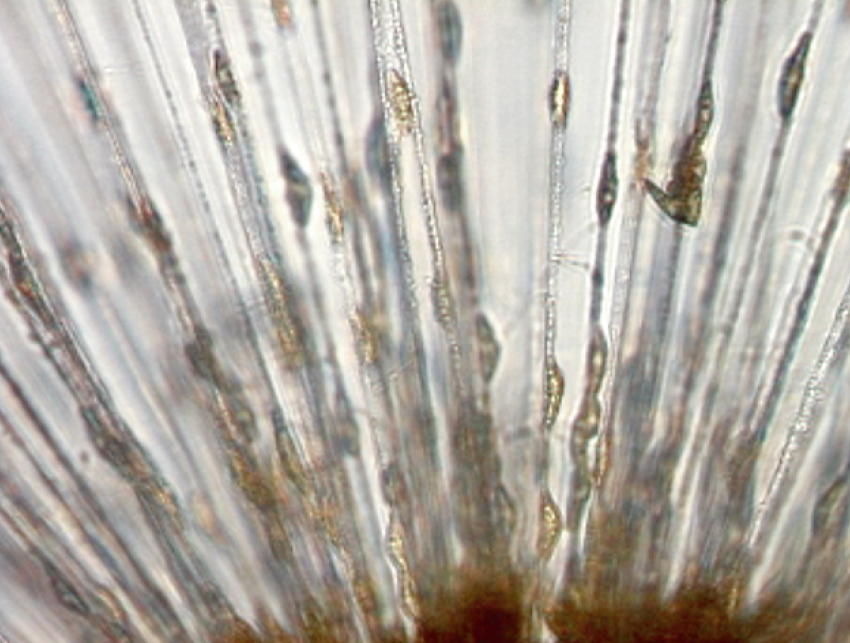
Large magnification image of symbionts (Yellow ellipse). They move with cytoplasmic flow along the spine.
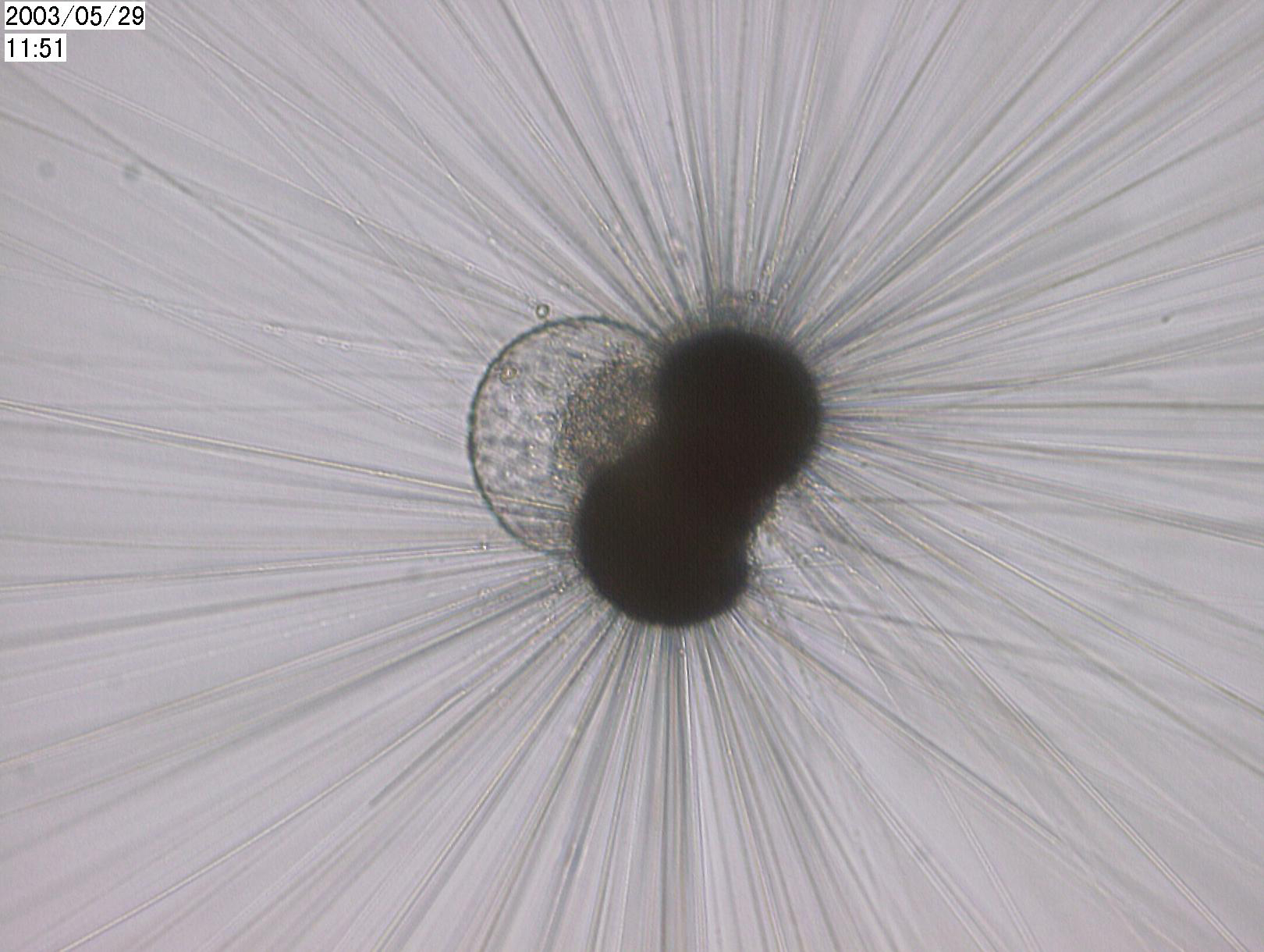
No symbiont species Globigerina bulloides.
海洋表層にすむ浮遊性有孔虫 Shallow water habitat depth species
浮遊性有孔虫は、浅い水深に棲む種類と、より深い水深に棲む種類によって形が異なります。下は約水
深0~100mに生息する種で、殻が薄く、より浮きやすいかたちをしています。
There are many morphologic variety of planktic foraminifera and that are closely related to oceanic environments where they live. Below figures are shallower habitat depth species (0 ~ 100 m water depth), porous and thinner shells for easy float in seawater.
マイクロフォーカスX線CTスキャナで撮影した3D画像
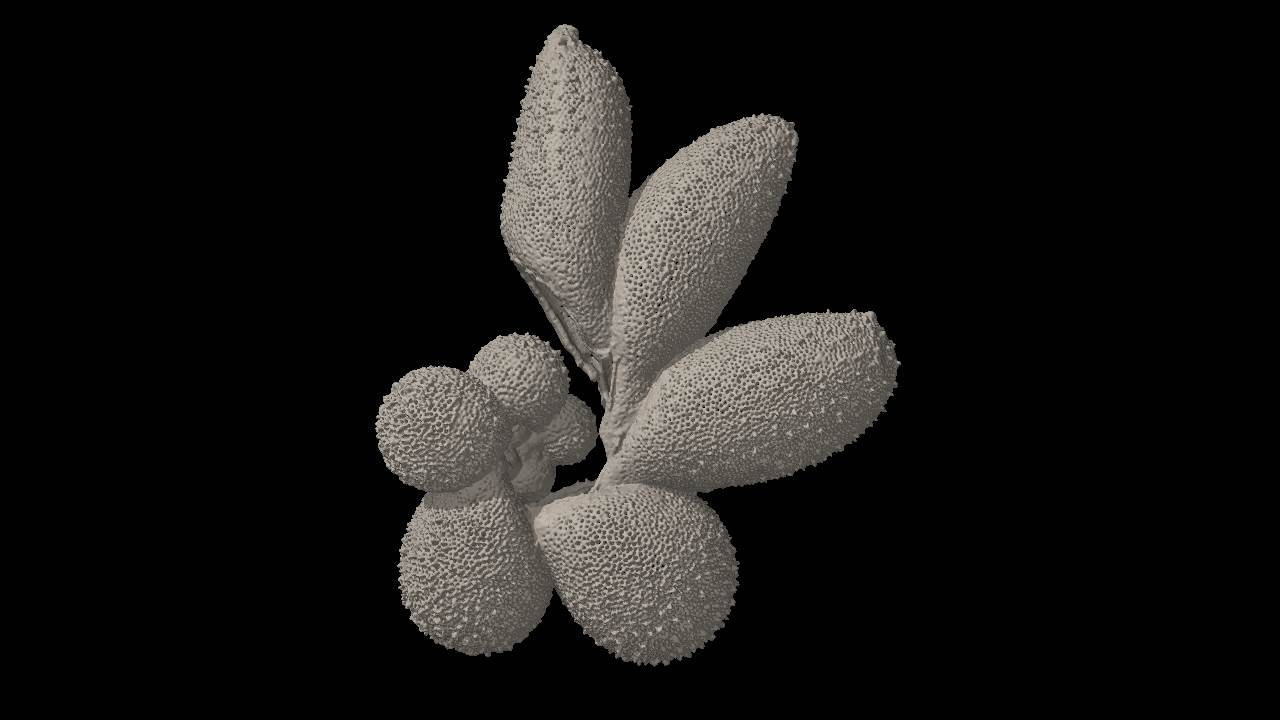
Globigerinella adamsi
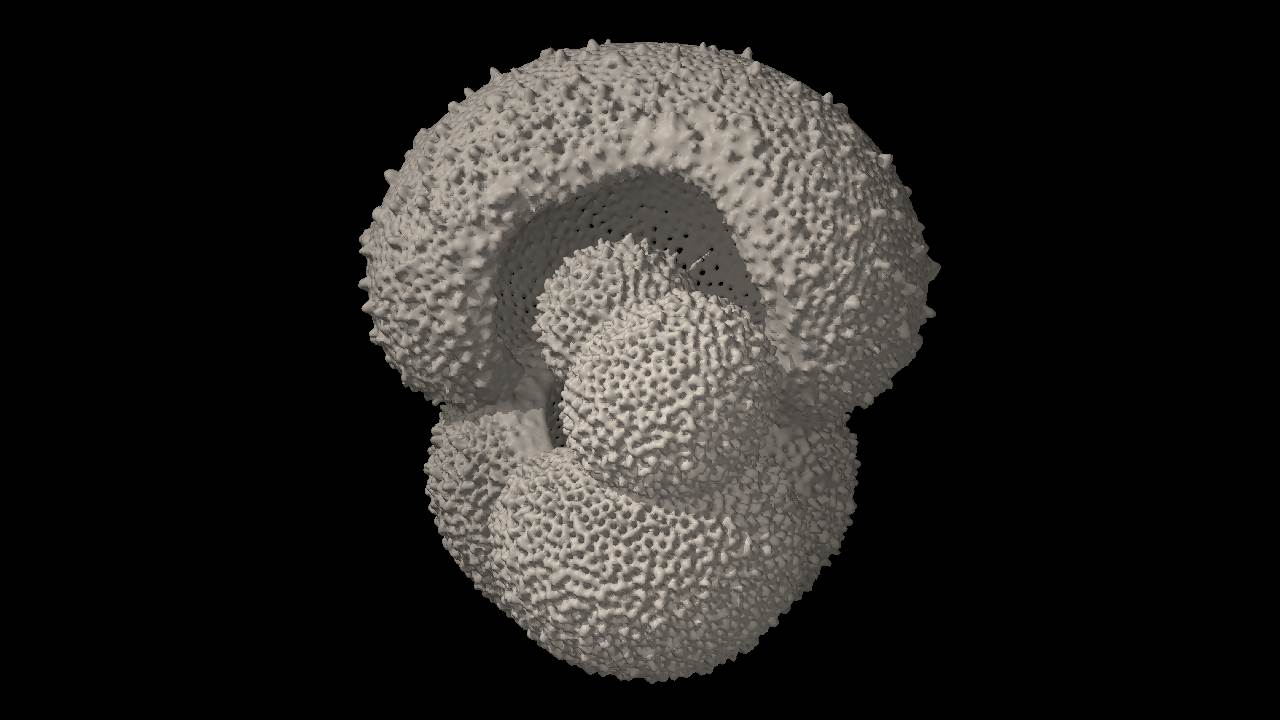
Globigerinella siphonifera
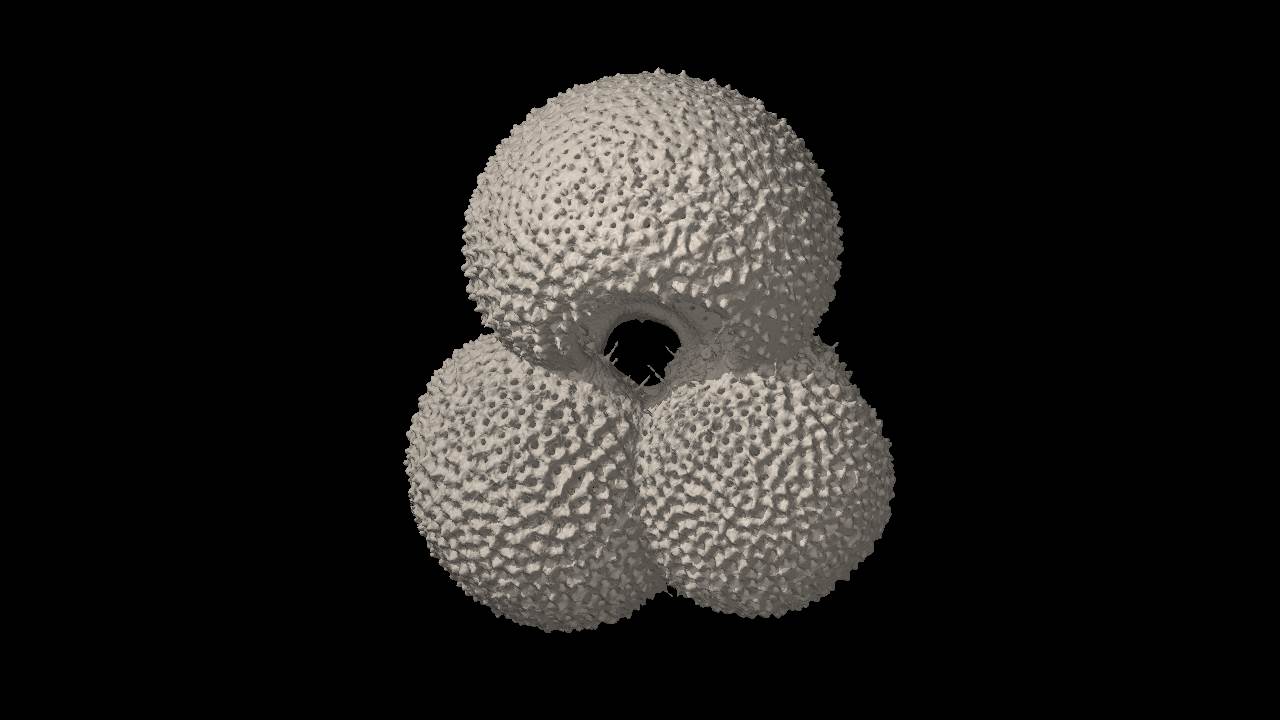
Globigerinoides ruber
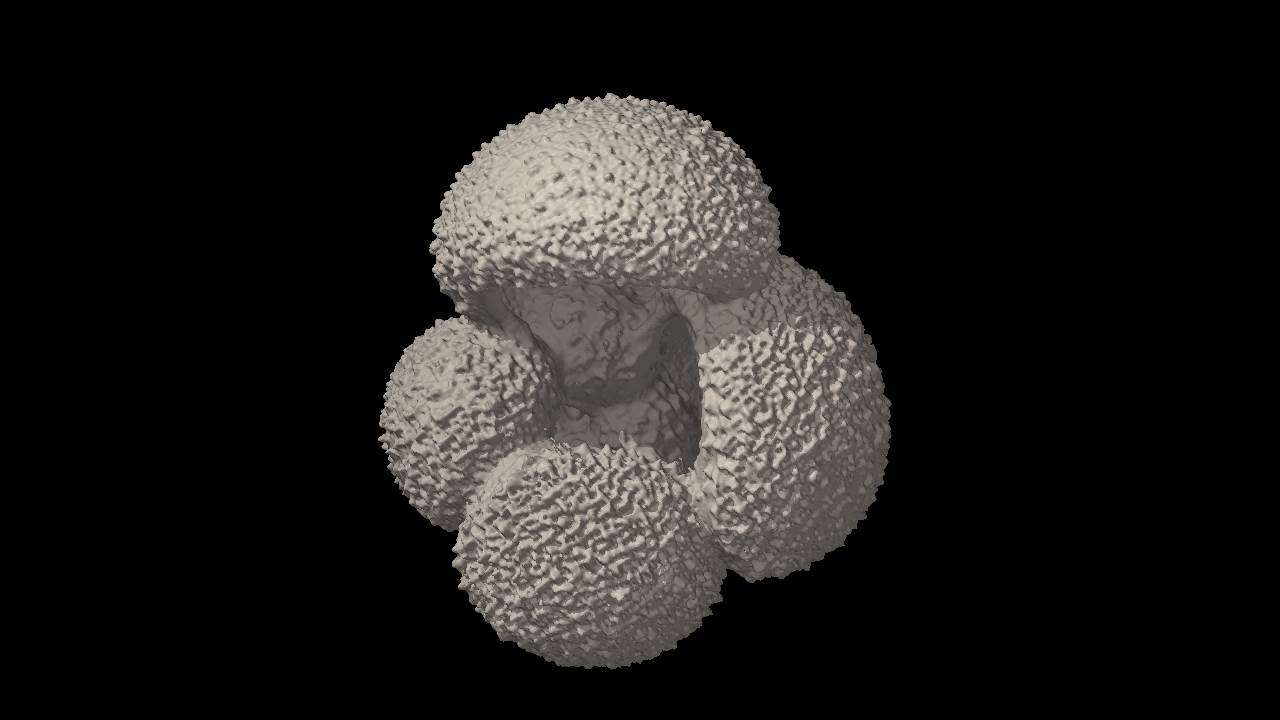
Globigerina bulloides
深い水深に生息する浮遊性有孔虫 Deep water habitat depth species
比較的深い水深(100m以深)に生息する種類です。浅い水深に生息する種類と比べると,スパイン(刺状突起)をもたず,大きく厚い殻を形成することが特徴です。
Below figures are deeper habitat depth species of planktic foraminifers (>100 m water depth) . The most specific differences of shell morphology between shallow and deeper habitat species are larger, no spines, thicker and high shell density.
マイクロフォーカスX線CTスキャナで撮影した3D画像
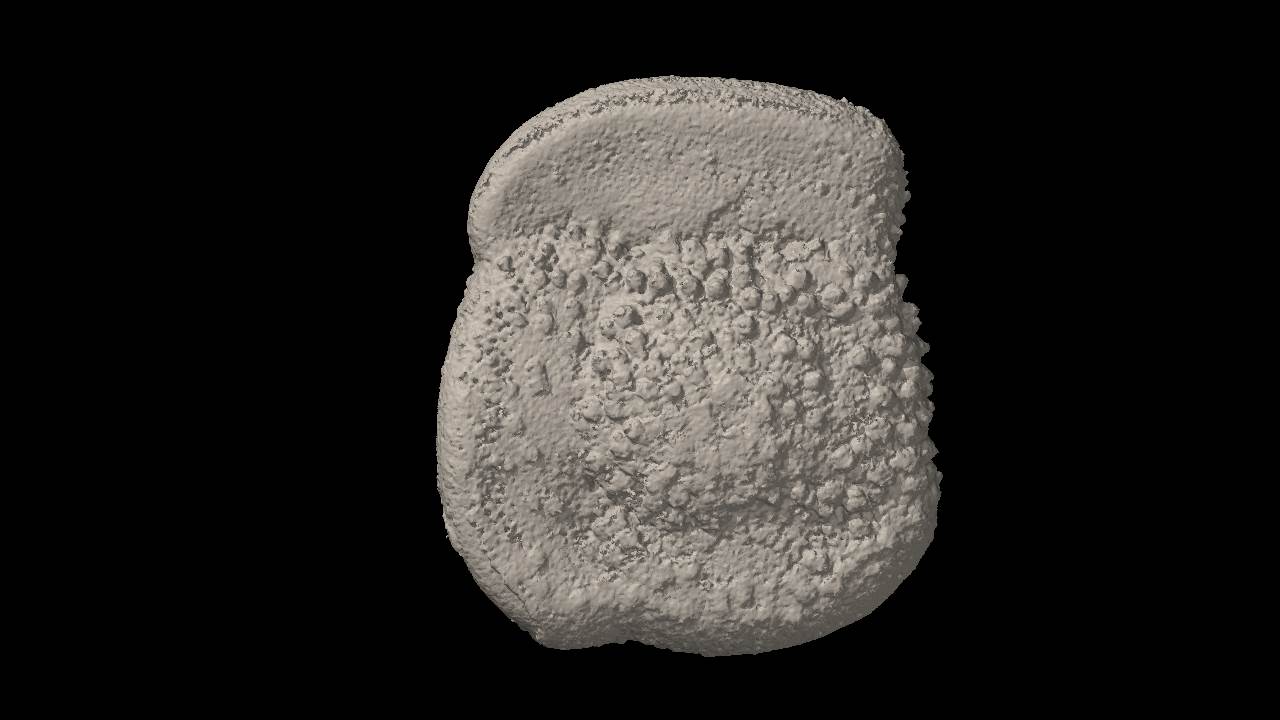
Globorotalia crassaformis
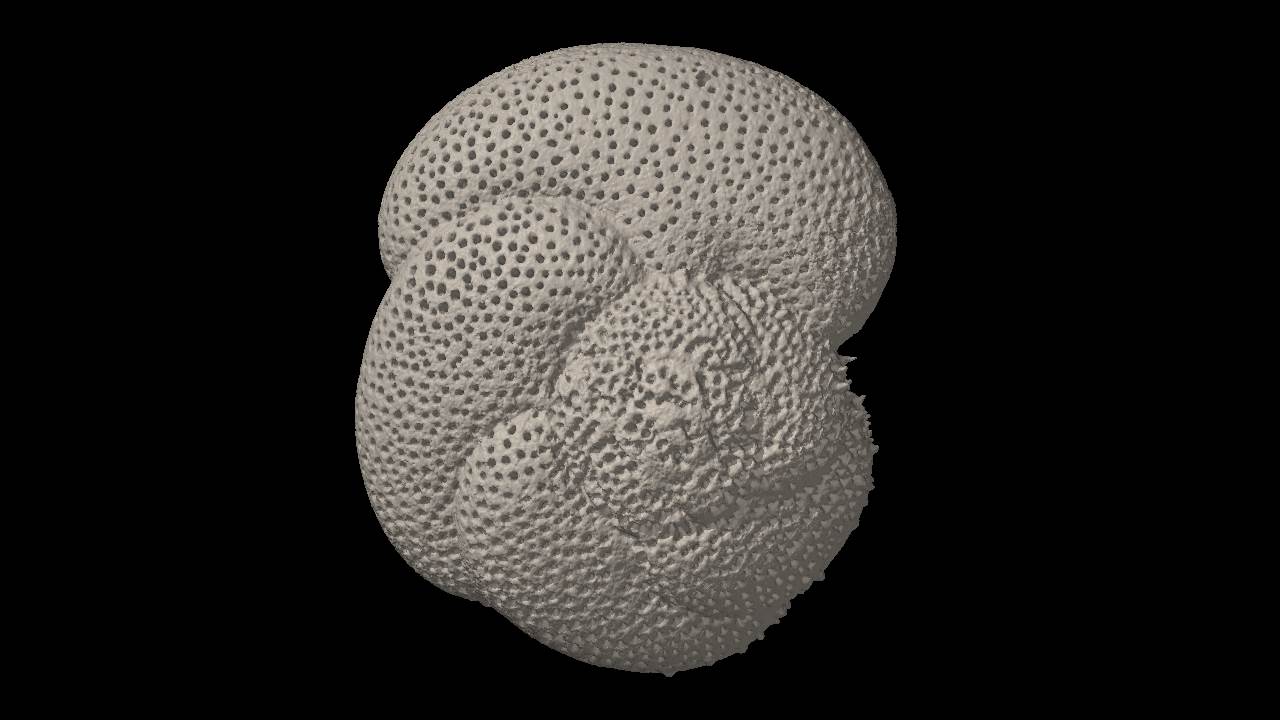
Globorotalia scitula
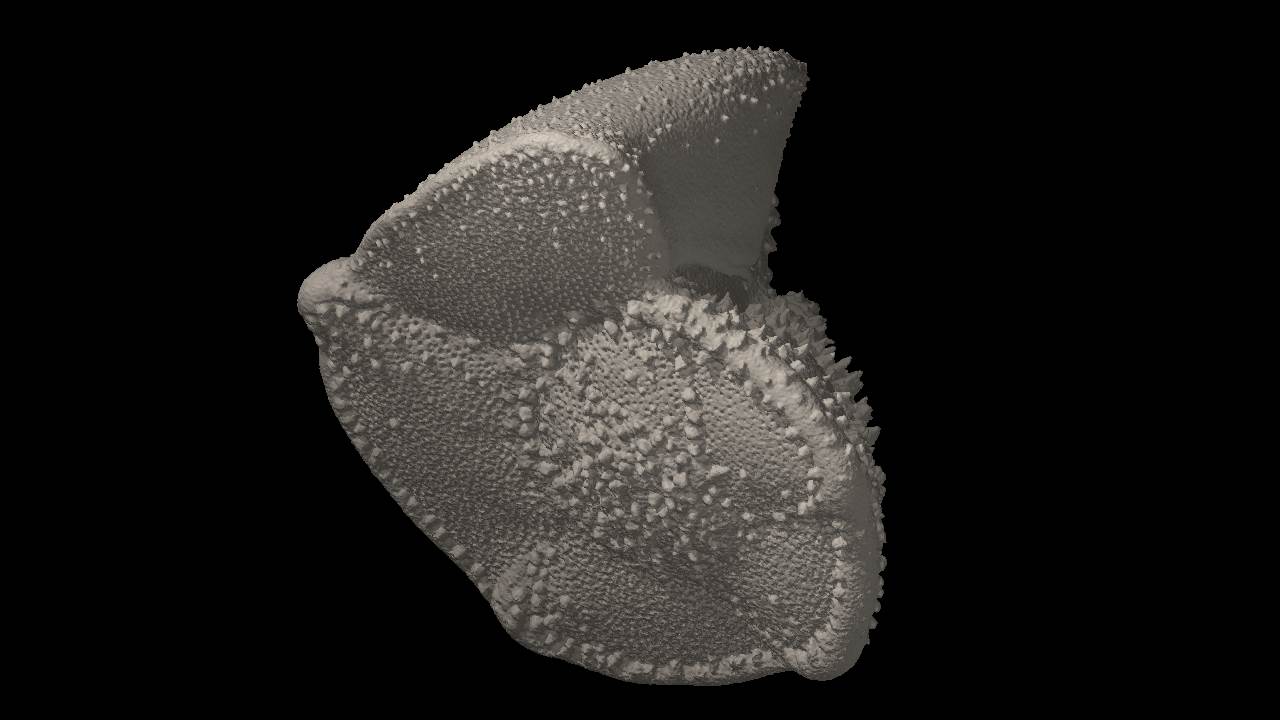
Globorotalia truncatulinoides
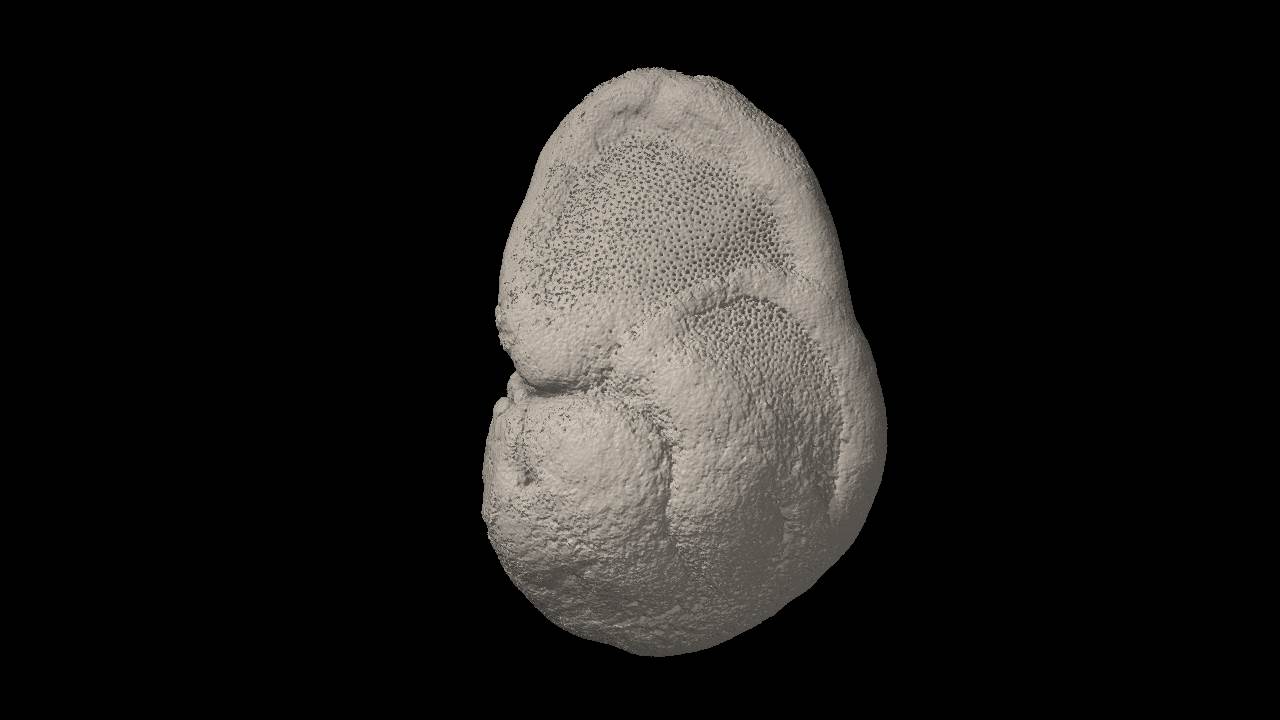
Globorotalia tumida
有孔虫の殻は過去の海洋環境を記憶する
Foraminiferal shells: As a recorder of past climate change of the Earth
浮遊性有孔虫の骨格は、頑丈な炭酸カルシウムで出来ています。このため、死んだ後も溶解されずに海底の堆積物の中に保存されます。有孔虫の骨格は、それが生きていたときの海水の水温、塩分、栄養の状態等の物理化学的な状態を記録しているため、海底の堆積物に含まれる有孔虫の骨格の化学分析を行うことにより、過去の海水の状態や地球環境の変遷を復元することができます。
Calcareous shells of planktic and benthic foraminifers are kept in the deep-sea sediments and provide important informations about the history of earth environments. In other words, foraminiferal shells are good recorder of the climate changes. Scientist takes deep-sea sediment samples from the deep sea floor and analyze the chemistry of their shells to reconstruct the history of past Earth climate changes since 2 hundred million years
BP.
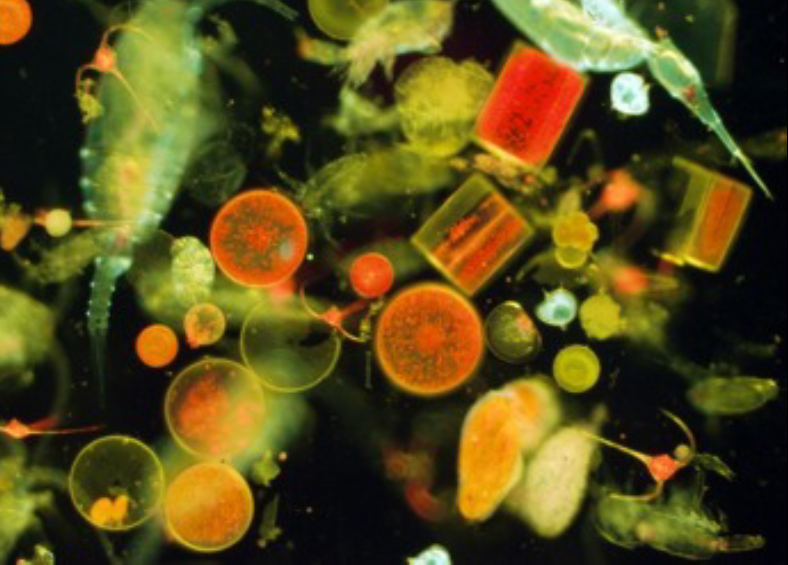
Plankton samples recovered from the surface seawater. Huge number of phytoplankton and zooplankton are living in the ocean.
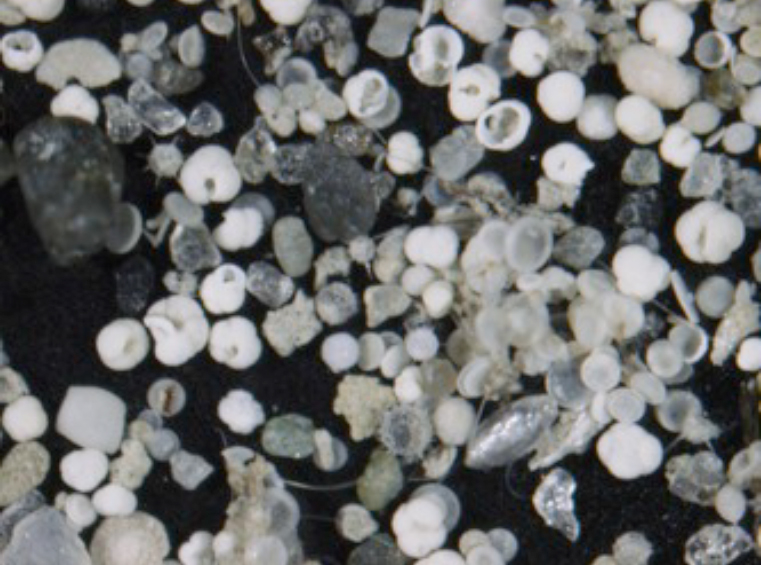
Samples recovered from deep sea. White particles are wellpreserved planktic foraminiferal shells. Dark ones are lithic fragments.
サンプルの採取
Collecting samples from the Ocean
生きている浮遊性有孔虫を調べるには、プランクトンネットを用いて海洋のあらゆる水深から採取します。また、海底の堆積物はマルチプルコアラーや、グラビティコアラーを用いて海底から採取します。
Living planktic foraminifers are collected from the seawater by using plankton net. The fossils of foraminiferal shells are recovered from the deep sea floor using multiple corer and gravity corer.

